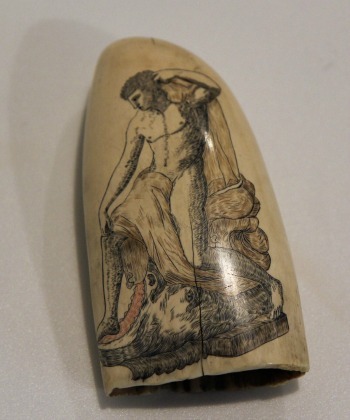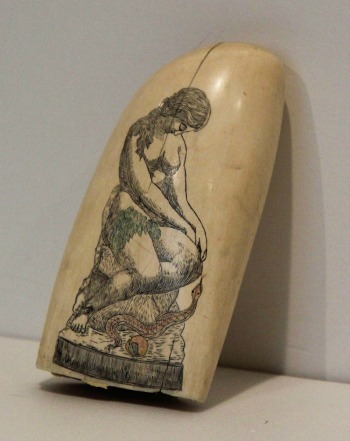Scrimshaw
Although the figure of Daniel presents an idealized image of a masculine male, with his accentuated musculature and heir of triumph, masculinity as defined on whaling ships was far from this ideal. Men were generally assigned “feminine” roles, often coinciding with domestic work (cooking, cleaning, etc). Although these men were performing feminine roles, this had little effect on their sexual identity. Many of them simply relabeled these feminine tasks in more masculine terms, and some even drew pride from their ability to complete domestic work with the greater skill than a woman.
On the physical whaling vessel it was common for the crew to be entirely comprised of men, but in maritime history women have supported men greatly both on land and at sea. Not only were women a crucial component of this ship/shore interface, they were also popular subjects for imagery on scrimshaw and were often recipients of the gifts crafted by scrimshanders. Although this scrimshaw depicts a nude image of Eve, one of the most common motifs were depictions of women in fashionable clothing. Whale ivory was incredibly common in 19th century corsetry, and was often used as a brace to help the corset retain its form once cinched.


